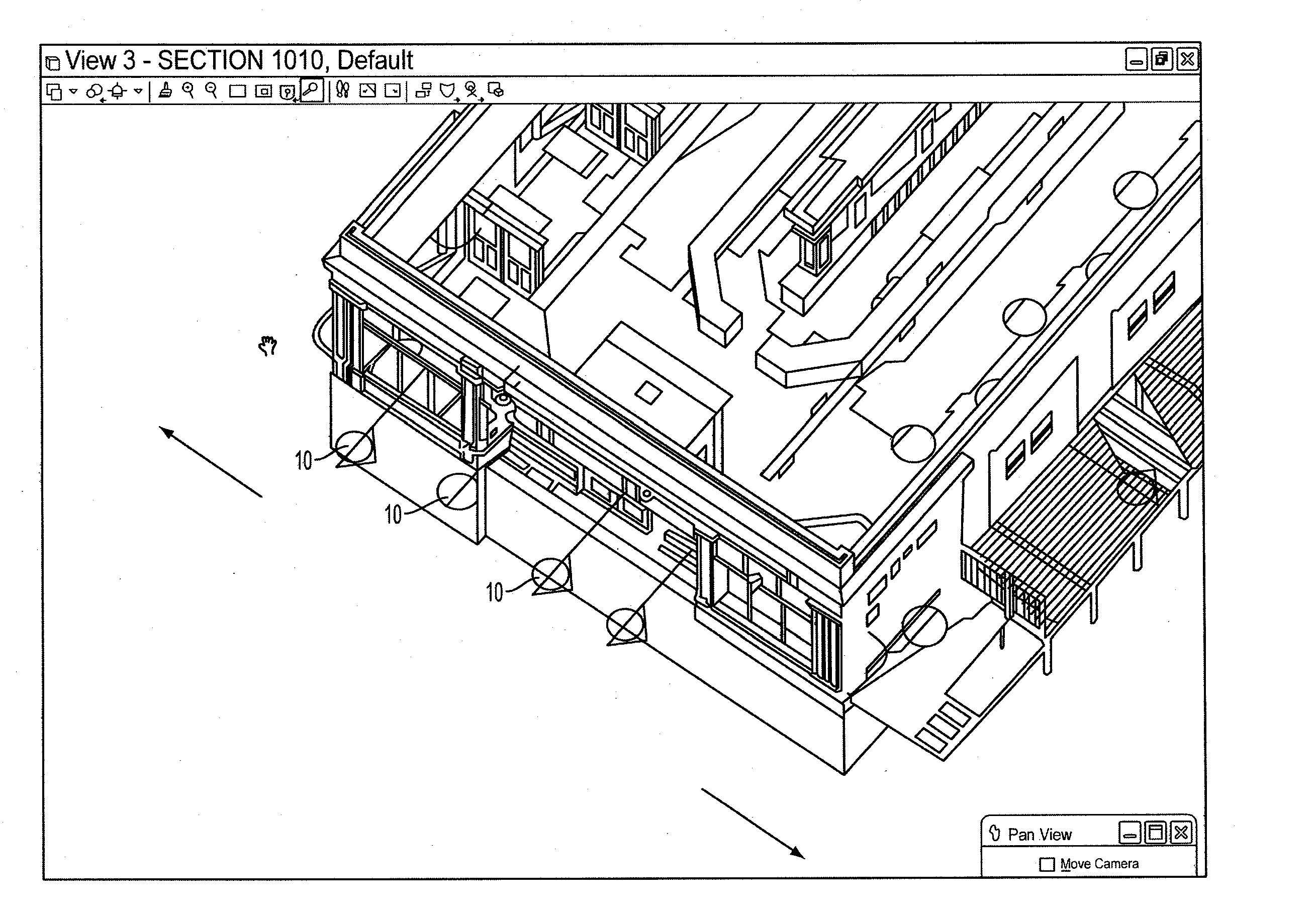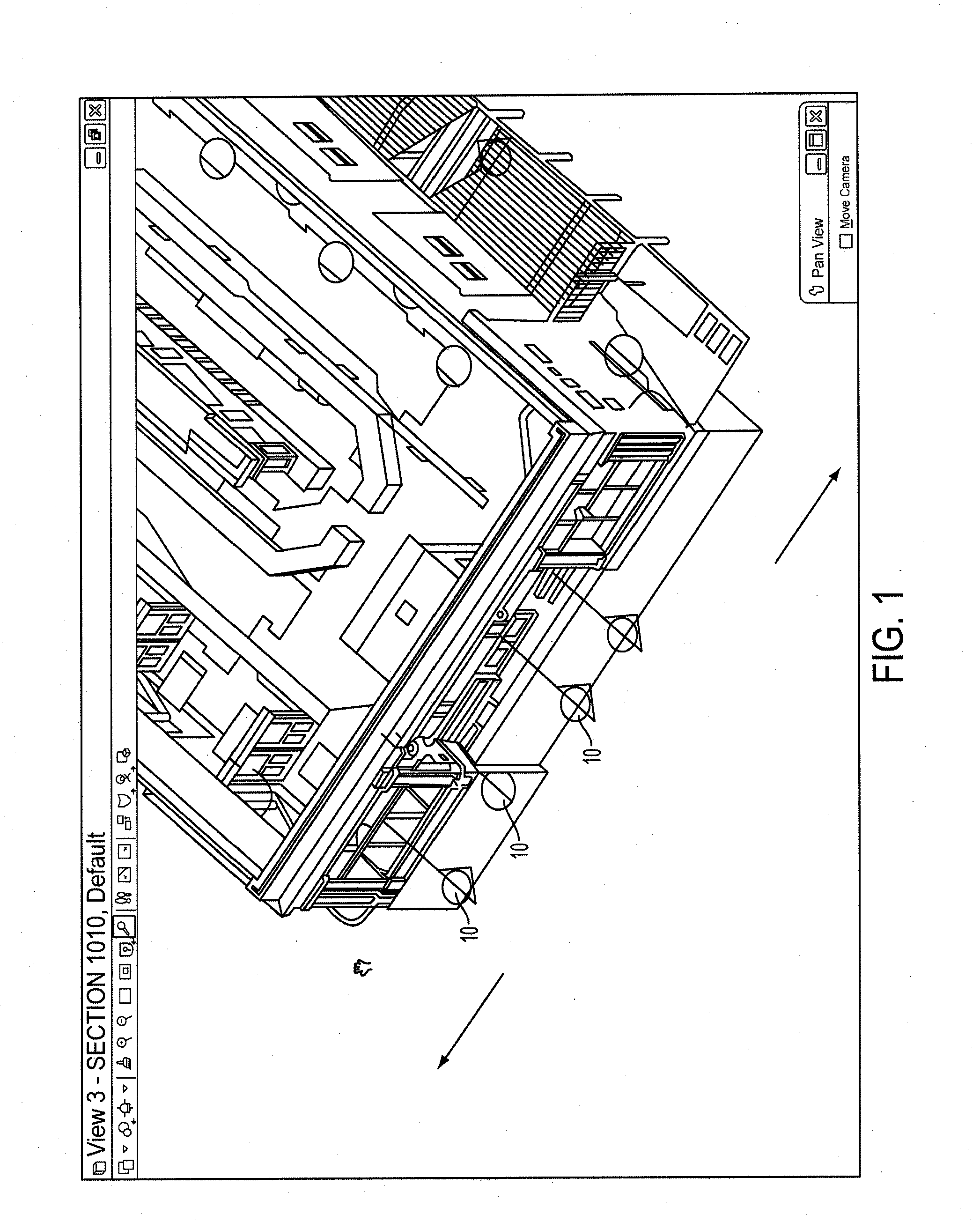Multi-dimensional artifact assemblage for infrastructure and other assets with interface node mediators
a technology of artifacts and infrastructure, applied in the field of computer aided design software, can solve problems such as unachievability, incomplete 3d model, and inability to complete the whole 3d model, and achieve the effect of improving the quality of the 3d model
- Summary
- Abstract
- Description
- Claims
- Application Information
AI Technical Summary
Benefits of technology
Problems solved by technology
Method used
Image
Examples
Embodiment Construction
[0017] Example embodiments of the invention are discussed below in the context of CAD software. While specific example embodiments are discussed, it should be understood that this is done for illustration purposes only. The present invention may be used in any environment where disparate data is compiled and delivered.
[0018] Embodiments of the invention provide a system and method to compile different types of data from different locations into one reliable assemblage. The assemblage may include an index of information provided to a user. The assemblage may be in the form of a three dimensional (3D) representation of an object, where the 3D representation includes an index and links to more detailed information regarding the object. The 3D representation may be of any object, for example, a body part in the context of medical imaging, or a building in the context of architectural and engineering design.
[0019] The assemblage may be comprised of 3D and 2D artifacts. The 2D artifact ...
PUM
 Login to View More
Login to View More Abstract
Description
Claims
Application Information
 Login to View More
Login to View More - R&D
- Intellectual Property
- Life Sciences
- Materials
- Tech Scout
- Unparalleled Data Quality
- Higher Quality Content
- 60% Fewer Hallucinations
Browse by: Latest US Patents, China's latest patents, Technical Efficacy Thesaurus, Application Domain, Technology Topic, Popular Technical Reports.
© 2025 PatSnap. All rights reserved.Legal|Privacy policy|Modern Slavery Act Transparency Statement|Sitemap|About US| Contact US: help@patsnap.com



